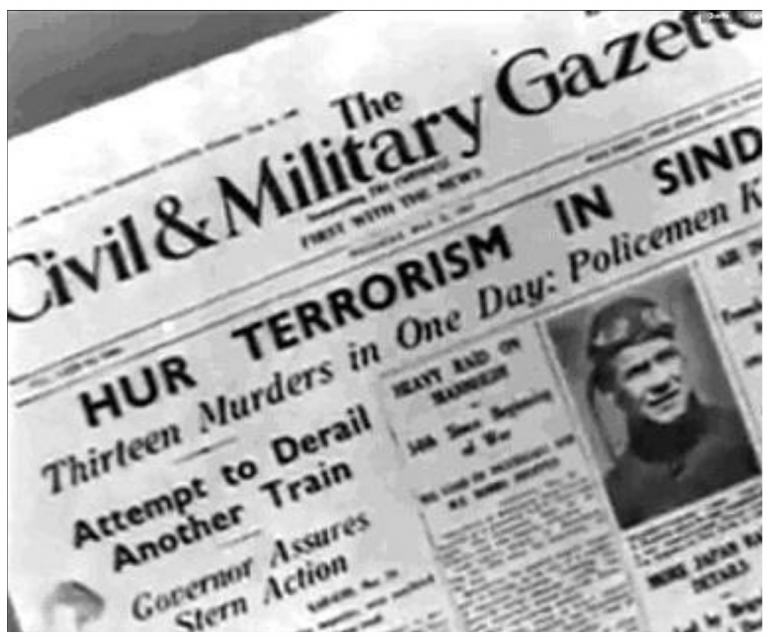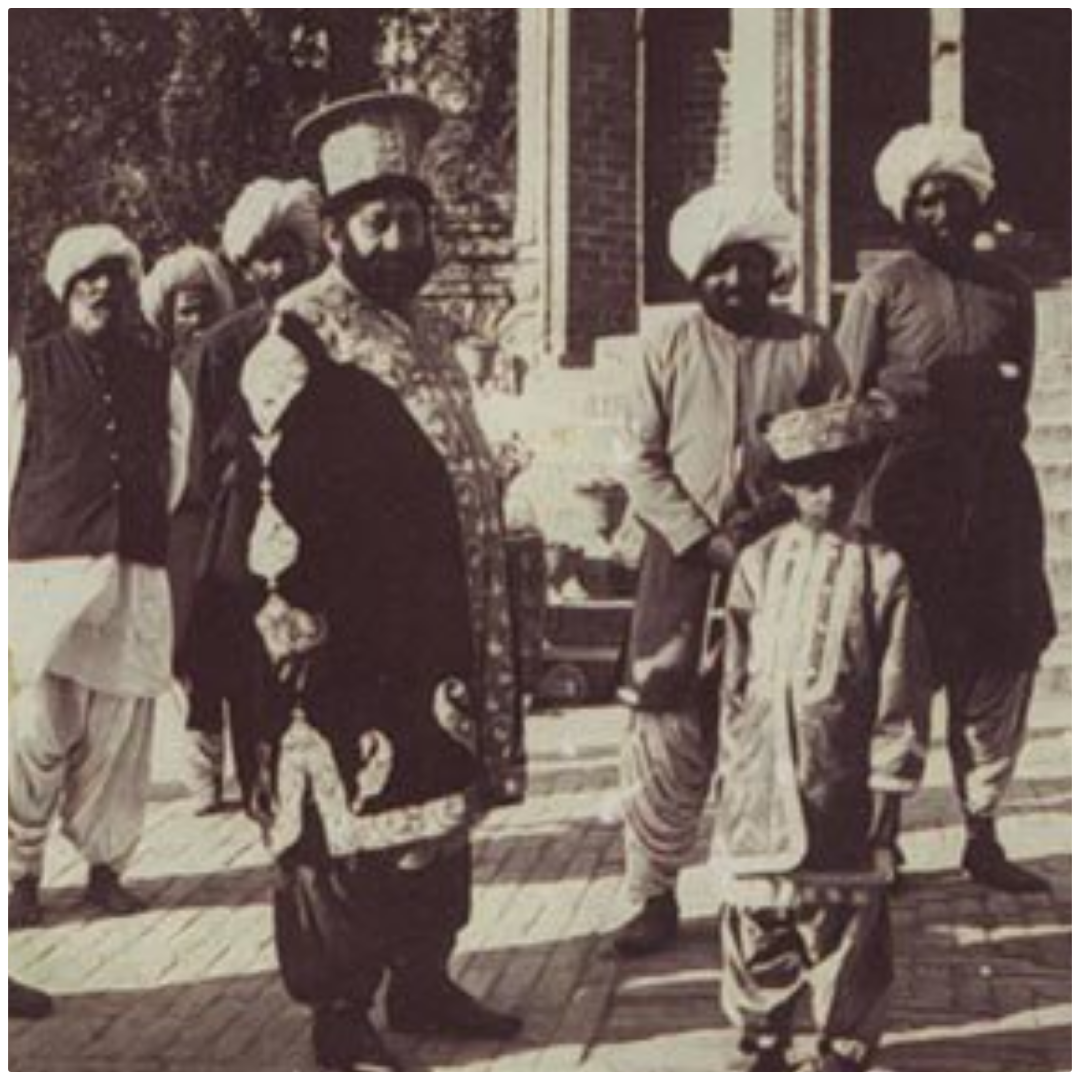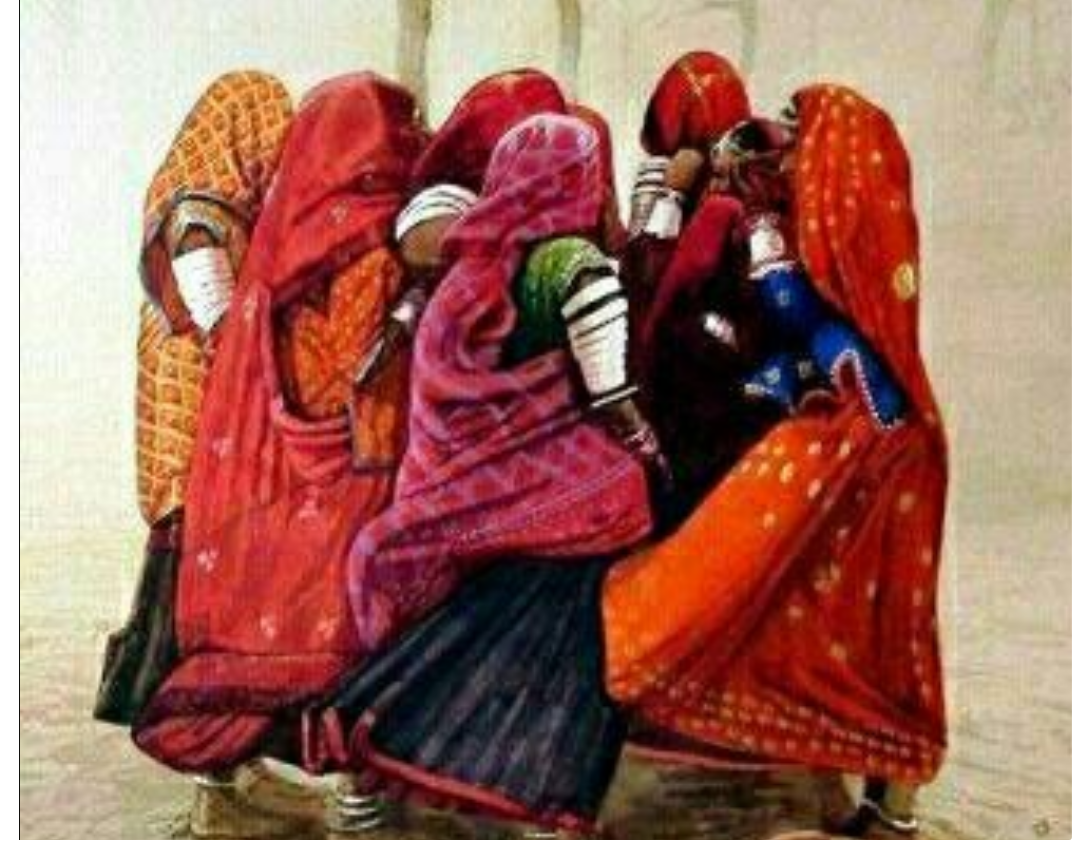

The Hur women with full zeal for their spiritual leader went shoulder to Shoulder with their male partners. Less has been done to encode such novel characters.
By Zain-ul-Abdin Sodhar, Muhammad Ali Laghari, Nasrullah Kabooro
The Hur movement with its four different phases is a unique chapter against colonial rule in the world history. A movement that vindicated the love of land and fought with famous slogan of Waatan ya Kafan brings the sense of patriotism of the people of Sindh with its land religion, culture and national values. The subject paper narrates the role of Hur women and their participation in the freedom movement. Less has been done to encode such novel characters. With the passage of time these glaring charters have departed to eternal unsung and in obfuscate way. This can be described as great injustice to a freedom movement which has discomfited Colonial power and at last has to evacuate this land after four years of the end of movement. HT Lambrick a British brought the account of Hur movement in negative description but it in other sense brings the viability of the movement and sense consternation for British power in Sindh.
Watch a video on Hur Movement
Muhammad Usman Deeplai brought event of furious fighting of valiant Hur fighters in his famous novel style narrations famously known as Sanghar. This brings viable record of Hur movement specially Male and female freedom fighters, their style of fighting and commitment to their cause. This book also reflects the depth of knowledge of their young supreme leader, his war tactics and his bravery in clear sense.

This paper deeply ponders on the role of Hur women fighters and the sacrifices of Hur women for the noble cause of freedom. The movement which had four different phases but this work is limited to the role of women in the fourth phase of Hur movement fought by Seyed Sibghatullah Shah Pir Pagara famously known as Soorah Badshah in history. Chronicles are of the opinion that Hur movement could have succeeded but the mischief mongering of native feudal community and their collusion with colonial powers on the lieu of fiefs, titles and money has affected it and constrained its success.
Background
Taking the role of women in Hur movement one goes back to 1843, the period of first Hur movement initiated by Pir Sibghatullah Shah Pagara-1, the Hur movement underwent four different Phases but most worthy from history points of view is the fourth stage of Hur Movement launched by Pir Sibghatullah Shah famously known as Soorah Badshah (1909-1943).
Watch another video on Hur Movement
This phase of Hur movement is based Ten years freedom movement, which was portrayed as rebellion by British History and its allied groups in Sindh and sub-continent.
The Pir Pagara and his Hur fighters which included man, women, girls and young children unfolds the movement of the liberation of their land occupied by the colonial rule. The vivacity of the movement from the can be taken from the fact that it shook the British colonial power of Sub-continent. Its supreme leader Pir Pagara had to live prison for Nine years in his 32 years life and was hanged in the age of 32 years and some months.
With this the glorious period of fourth phase of Hur movement has culminated, leaving the chronicles to write the stories of brevity and love with land in the chapters of History. British Commissioner of Sindh HT Lambrick brings the notes of Hur movement in his self-styled narrations with the name of Terrorist, while the natives of land termed the movement as freedom by fight to evacuate the land from colonial powers.
Muhammad Usman Deeplai brings the glaring brevity and valor of Hur women in his famous Novel description with the title of ―Sanghar.

The role of women
The history of British atrocities against the dwellers is never the hidden part of history.
When the Hur movements surfaced with the arrest of Pir Pagara in 1941, his devotees commonly known as Hur took upon them the arrest of their religious and spiritual larder as life and death issue. Men women and children, young and old, all came out of their homes and started a civil disobedience movement against British occupant force. This has resulted mass arrest of people.
The Hur women with full zeal for their spiritual leader went shoulder to Shoulder with their male partners. This can be validated from the fact that British Jails became insufficient place to keep the arrested people, thereafter, Nazi styled concentration camps with the Sindhi name ―Lohras‖ established all over Sindh where the Hur community was inhabiting. According to the facts there were thousands of women and young children‘s imprisoned in these concentration camps.
Imamzadi Wassan in her article on the role of women in Hur movement describes the atrocities of British forces in district Sanghar. She interviewed Sukhan Khaskalli of village Bhiri in her village near Sinjhoro city. She was one character in her movement.
She narrates that in 1941, when Pir Sahib Pagara was arrested; Hurs throughout Sindh came in streets and protested against the arrest of Pir Sahib.
The Hur women were never behind in any event. This has resulted in fury of colonial forces. An incident that has brought lot of anguish in Sindh province was fornication and murder of young shepherd girl Bakhtawar 13 years old of Bhiri village near Sinjhoro, who has taken her cattles in nearby fields; she was captured by the British troops, she was raped and murdered and her body was placed in nearby fields.
Hur women portrayed their bold character during the movement has shaken the British authorities in Sindh. They commanded attacks on British forces, repulsed them back and even in some occasions.
Sukhan recalls the atrocities of one police SHO Daharaj by caste was hailing from Nawab Shah. She says that when this SHO used to enter in the villages, he took everything what was available in their homes. He didn‘t leave even the chicks and the eggs.
Three octogenarian characters of Hur movement who were eye witnesses of the movement were interviewed in 2006 also recorded the role of women in Hur movement.
All three characters were living in village Gulsher Wassan of taluka Sinjhoro. They were Dhanjani, Namali and Hakimzadi. All three in their mid-nineties had active participation in the guerilla fight against British.
She recalls the clash between the Hur Guerilla fighter Bakshan Mochi and British troops near Jamrao, which resulted in the murder of number of British troops. After that event 20 females of the area including these three cited characters were arrested and imprisoned for 12 years till 1952 respectively in Sukkur jail for five years and seven years in concentration camps. She says that during their stay in Hyderabad concentration camps, they were very harshly treated, Involved in different works from dawn to dusk, given insufficient food stuff and many of their young children died due to malnutrition.
She says when Pir Shah Mardan Shah returned from England and held talks with Government of Pakistan; they were released from Hyderabad concentration camps. She remembers the role of Ali Muhammad Rashdi as of a conspirator in her traditional style and says, this traitor was friend of Angreez (English Govt.) and was always behind killing and arrest of Hurs throughout Sindh.
Qaimi, 88, the resident of Makhi forest, the Head quarter of Hur movement narrated the days of Hur movement. She says the major communities living in Makhi area were Junejos, Bhambro, Abupota, Jamali, Wassan, Rajar and Nizamani community. All these people were devotees of Pagara. When Soorah Badshah was arrested, a fierce battle took place between British forces and Hurs near Martyrs ground (Shaheedan Jo Maidan) south of Sanghar city, around 2000 Hurs were arrested, many of them exiled on Indian side, number of them were hanged. Hashim husband of Qaimi was also arrested.
She remembers on night police besieged their homes, she had one rifle with number of cartridges in her home. Her daughter was 17 years old, she was afraid that her daughter might not be taken. She took rifle and cartridges with herself ask her daughter to accompany her to roof top of their home. As she heard noise of the arrival of police she fired shots and soon repulsed police. She says Police felt that numbers of Hur Guerillas are probably hiding. They became afraid and returned. Next morning she and her daughter escaped from their village to their relatives in other area.
She remembers the speech of Soorah Badshah at Grang Banglow, where Pir Sahib had directed all Hur women not to wear bangles till we evacuate occupant forces from Sindh, she says from that day and onwards she has not worn bangles.
Muhammad Usman Deeplai in his masterpiece Sanghar has brought the account of such great females who scintillated themselves in history. The Brief account of such characters is as follows:
Mai Munan Daughter of Noor Muhammad Khaskhelli
She was resident of village Sahib Khan some 12 miles in east of Sanghar City. She used to command a group of 20 females. She fought with police and troops on many occasions. She was arrested at the age of 60 and put in Hyderabad Jail.
Mai Basran
She was resident of Nindo city of Badin district and was married in Sanghar, she now resided near Padri village some 10 KM from Sanghar city. Her group also consisted of 15 females.
Mai Muradana
She was Daughter of Imam Bux Khaskhelli of village Makhan Khaskhelli she too had command of group of Hur Girls ageing between 15 to 20 years. She attacked and killed a Hindu businessman involved in conspiracies against Hurs.
Mai Hawal
Aged 50 decided to command Hur woman in Landhi area near Shahdadpur when her son refused to become a Ghazi. She had attained great fame when she attacked British convoy and exchanged firing for many hours and repulsed British troops.
Mai Begoo Rind
She was another glaring character of Hur Movement. She was resident of village Sahito Khaskalli Her husband was declared as Dacoit and imprisoned. She took the responsibility of Hur women commander. She fought on different occasions and at last arrested and put in concentration camps. Later she joined under the command of Bhai Khan Chang and fought with male Hur Ghazis with valor.
Ashoo Daughter of Usman
She Machi lived Near Bakkar she was middle aged women and commanded Hur women in Sanghar area. She was a good planner and fighter. She too was arrested and imprisoned in concentration camps.
Mai Zahra
She was a gallant woman who uses to disguise herself in military dress. She was famous with her adopted name of Usman. When Martial law was declared on eastern belt of Sindh, she was high target for British troops. She fought many times and successfully escaped.
Mai Parozan
She was resident of Nara Khairpur. She joined Hur women groups of Sanghar. Her groups stayed in Narra and Makhi area she too was source of freight for British troops.
Conclusion
The Hur movement has placed itself in world history through its valiant fighting, Guerilla war tactics and better fighting planning. This war has devastated the strategic power of British colonial rule in Sindh. A movement which enlisted 38000 thousand martyrs, 250000 arrests including women and children and its supreme leader Pir Sibghatullah Shah Alias Soorah Badshah hanged in the age of 33 brings this movement among glaring freedom movements in the history of world.
The role of women in this movement has enhanced its fame. Hur women Guerrilla fighters went shoulder to shoulder with their male partners and encoded unique chapters of brevity and women empowerment. The British documents regarding Hur movement also places the role of women freedom fighters as worthy to mention.
_________________________
Masha Allah very well done great efforts to compile, no doubt Usman deplai did great work
though it was great movement for independence of sindh from.colonial rule.
But sindhi intellectuals remained biased and alwaya trying to tarnish the image of that movemwnt.